Activity
[ Design Tourism ]
2023.02.08
First time! Design Tourism Observation Tour in Tokushima! ~Part 2
The KUKAN DESIGN AWARD recently held its first “Design Tourism Observation Tour” with the aim of sensing and thinking about good design and space.
The 11 members participating in the tour were the same members from KITO on the previous day. On the second day, we headed to our next destination, KAMIKATSU ZERO WASTE CENTER, while retaining the excitement of the MIRAI CONVENIENCE STORE and the interview with Mr. Fujita from the previous day.
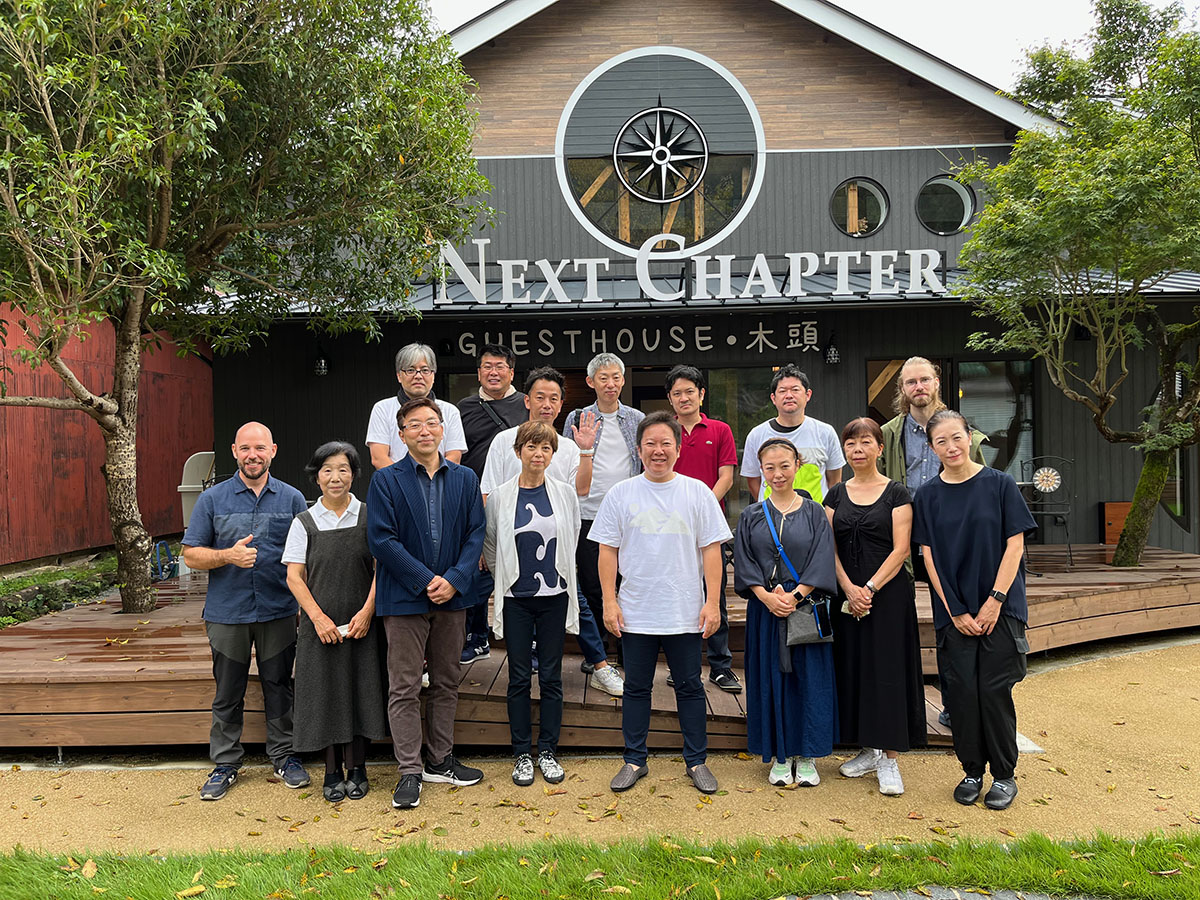 Commemorative photo with Mr. Fujita and people in KITO
Commemorative photo with Mr. Fujita and people in KITO
Chapter_01: Transition
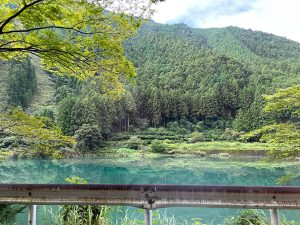
The “Utsuri” is just around the corner. How it changes in the fall …
We will drive to KAMIKATSU ZERO WASTE CENTER. While we are excitedly discussing design in the car, we are also overwhelmed by the abundance of nature along the way. The changing landscape of Shikoku’s mountainous region, which is expected to change in various ways as we move toward autumn, reminds us once again of the invisible concept of time.
Exploring the relationship between local resources and design was also a sub-theme of this year’s exhibition, and I was deeply impressed by the fact that local design, which is only possible in a particular region in terms of industry, materials, people, and lifestyles, is in fact a global trend.
OHODORORO Falls.
It is a 20-meter three-tiered waterfall selected as one of the 88 scenic spots in Tokushima. The fresh greenery in spring and autumn leaves in fall can be enjoyed, and the waterfall is illuminated in November every year.
The water volume has been decreasing year by year, and now the water has dried up to the extent that the bottom of the waterfall is visible, but it used to be so full of water that the bottom of the waterfall was invisible.

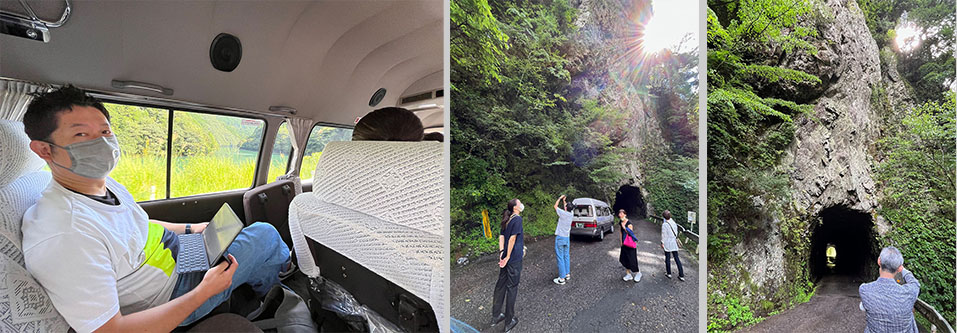 from left )Members get excited while on the move, Members lost in thought, Unexplored…
from left )Members get excited while on the move, Members lost in thought, Unexplored…
OOKAMA Falls.
The 20-meter-high waterfall is surrounded by cliffs and has been selected as one of the 100 best waterfalls in Japan, one of Tokushima’s 88 scenic spots, and one of Tokushima’s 50 best water travel destinations. The water volume is still abundant, and the waterfall basin is as deep as 15 m. Legend has it that a giant snake dwells in the basin. The waterfall can be approached from the bottom of the river, down a flight of stairs, and although the members of the group descended, it was quite an adventure!
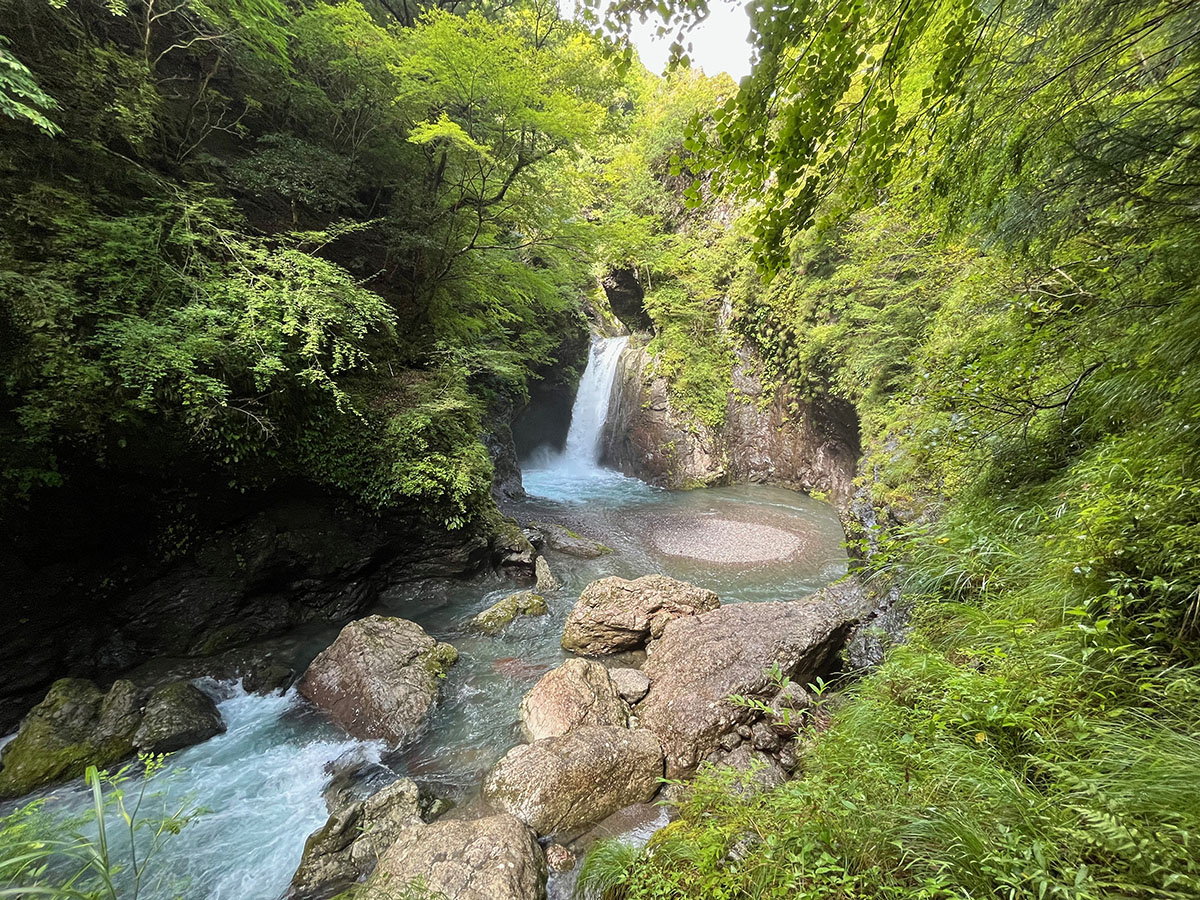 The waterfall basin looks quite mysterious.
The waterfall basin looks quite mysterious.
 from left )The road is narrow and there are cliffs on both sides, Members going down to the waterfall basin!
from left )The road is narrow and there are cliffs on both sides, Members going down to the waterfall basin!
“Local stuff.”
Passing through the village from the mountainous area, we stopped at the JA Higashi-Tokushima “Yotenne Market” on the way. The town is famous for its mandarin oranges, but it also offers a lineup of local shiitake mushrooms and other processed products in addition to citrus fruits. The market is also famous as a rest stop for pilgrims, as the 88 temples of the Shikoku pilgrimage are located nearby.
 JA is also an antenna store that provides direct contact with the community
JA is also an antenna store that provides direct contact with the community

Public restroom signage
JA has been running a campaign called “National Consumption and Domestic Production,” and I had the impression that each place I visited this time was promoting the use of local materials and other resources from an environmentally conscious perspective.
Even a casual note in a public restroom conveys a message about the community and the environment.
Chapter_02: Toward a society that produces no waste
Kamikatsu Town “Zero Waste Declaration”
Kamikatsu Town is known as the town with the smallest population in Shikoku (1,457 people as of January 2022), but it has also attracted global attention by becoming the first municipality in Japan to make a “Zero Waste” declaration in 2003. Zero-waste = a society that produces no waste, and reducing waste to zero is the future vision of Kamikatsu Town. Kamikatsu-cho does not burn garbage, does not collect it, and promotes recycling by having each resident bring their own garbage to the town-operated “garbage station” and sort it into 13 types and 45 categories. The recycling rate of food scraps, which are composted by each household, has exceeded 80% by 2020.
The purpose of the second day of the design tourism was to experience how design participated in the “Zero Waste Declaration” of Kamikatsu Town through observation and how it was involved and realized
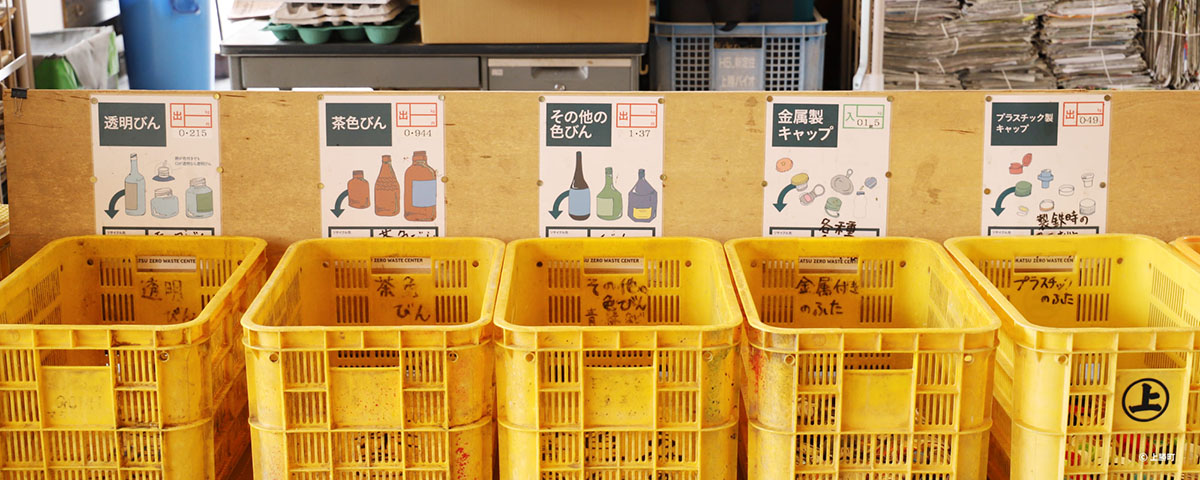
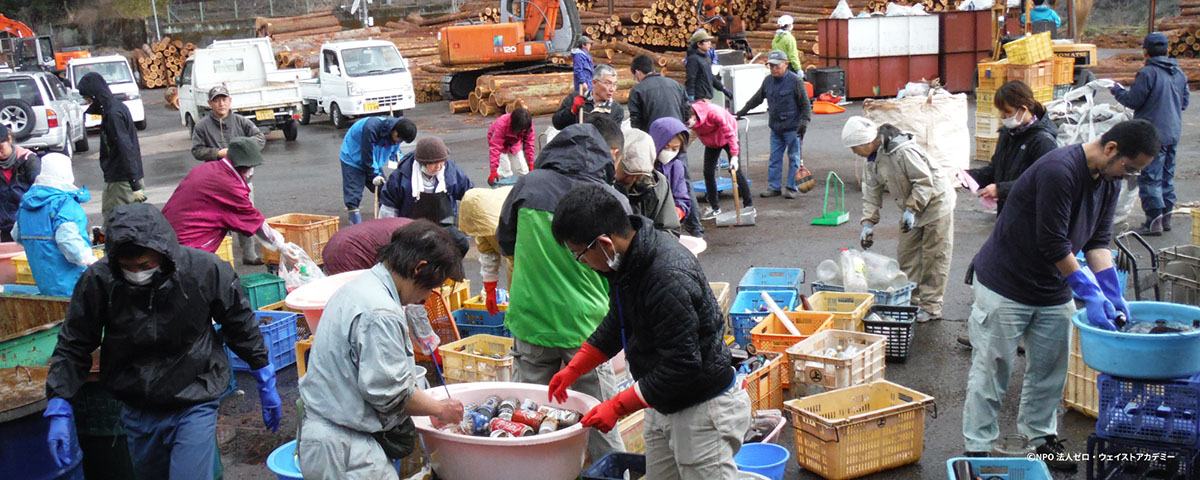 Taken from the Kamikatsu Town website(https://zwtk.jp)
Taken from the Kamikatsu Town website(https://zwtk.jp)
「RISE & WIN Brewing Co. BBQ & General Store」
The facility was designed by Nakamura Takushi & NAP Architects, the same firm that designed the KAMIKATSU ZERO WASTE CENTER, which opened in May 2015 in sympathy with the town of Kamikatsu’s “Zero Waste” activities. The building, which reuses fittings used in private houses demolished in the town, is an architectural expression of how a sustainable society should be.
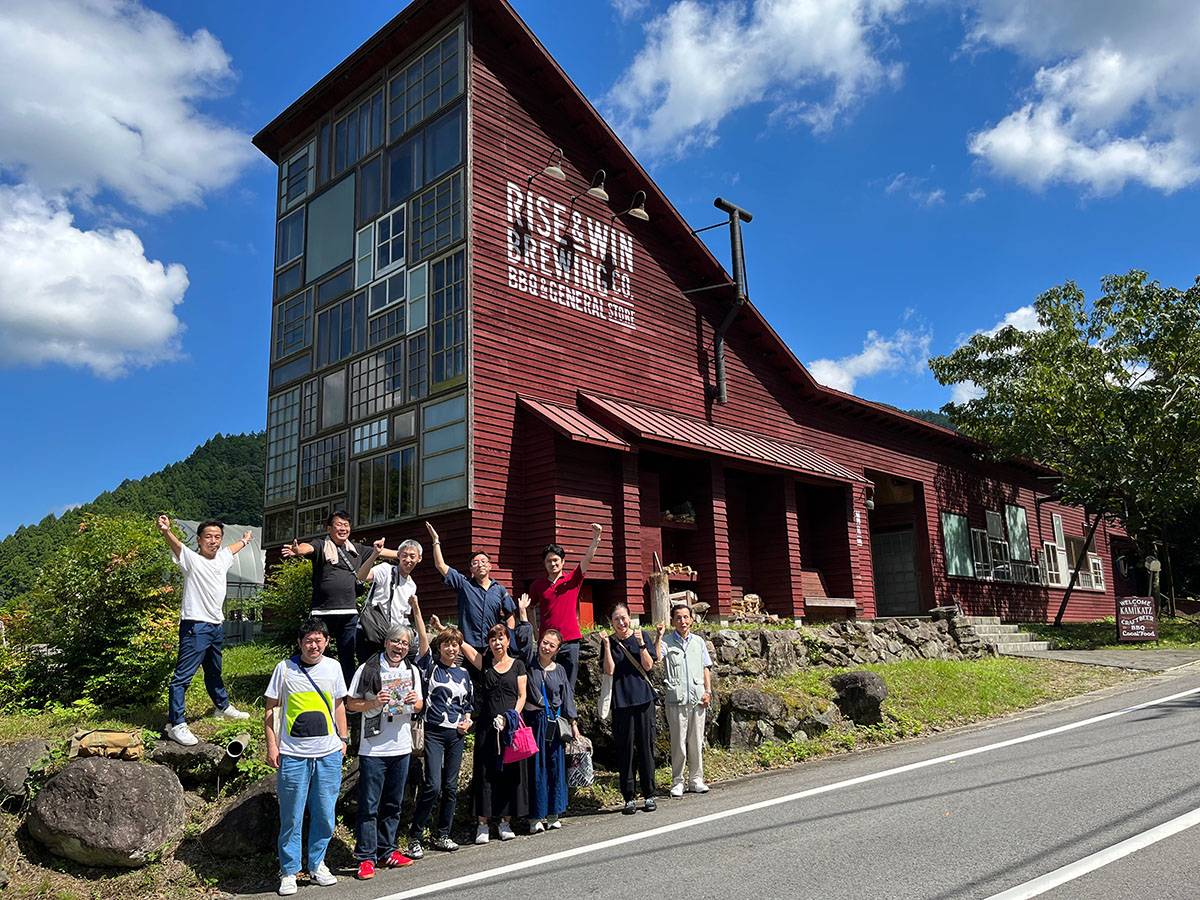 Craft brewery with brewery, restaurant, store and accommodations
Craft brewery with brewery, restaurant, store and accommodations
 from left )The exterior is also very thoughtful, Distinctive facade
from left )The exterior is also very thoughtful, Distinctive facade
“Design for coziness.”
The fixtures and furnishings collected as waste from private homes not only complement the store’s functionality, but also carry emotional value as a “cozy space. The seemingly random arrangement of discarded materials may have been carefully designed to create a design rhythm.
The light shining through the double-glazing on the entire façade gives the space a spacious feel, and the exquisite shading created by the sash frames creates a sense of comfort by creating an ambiguous boundary rather than cutting off the borrowed scenery.
 Scrap wood furnishings create a cozy atmosphere.
Scrap wood furnishings create a cozy atmosphere.
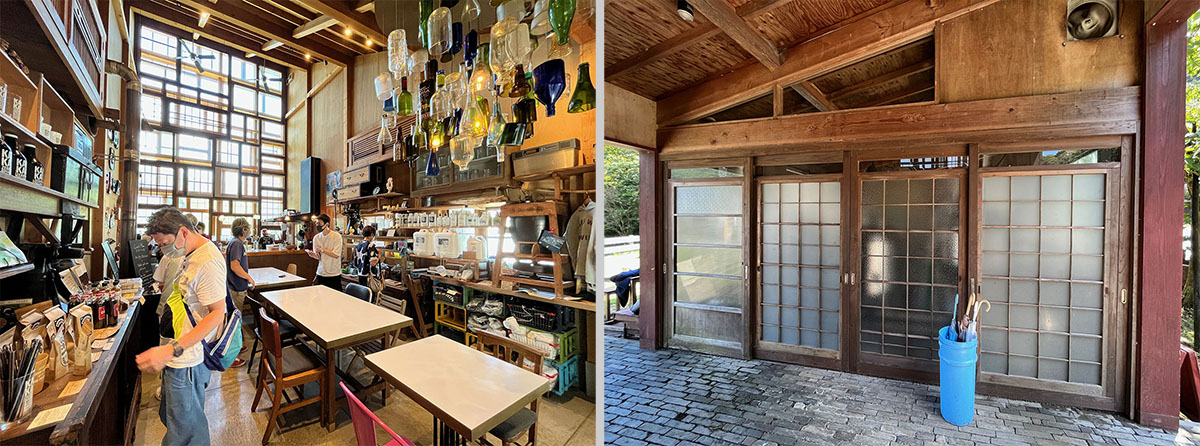 from left )Bright and expansive space, Brewery fittings
from left )Bright and expansive space, Brewery fittings
“Following the concept.”
The design concept is not limited to the space design, but the concept extends to the menu, goods, and staff services.
The backyard for lunch and BBQ is very bright and open, and the “fun” of using the space is also substantial. We did not feel any disadvantages or negative images of the space being made of scrap wood.
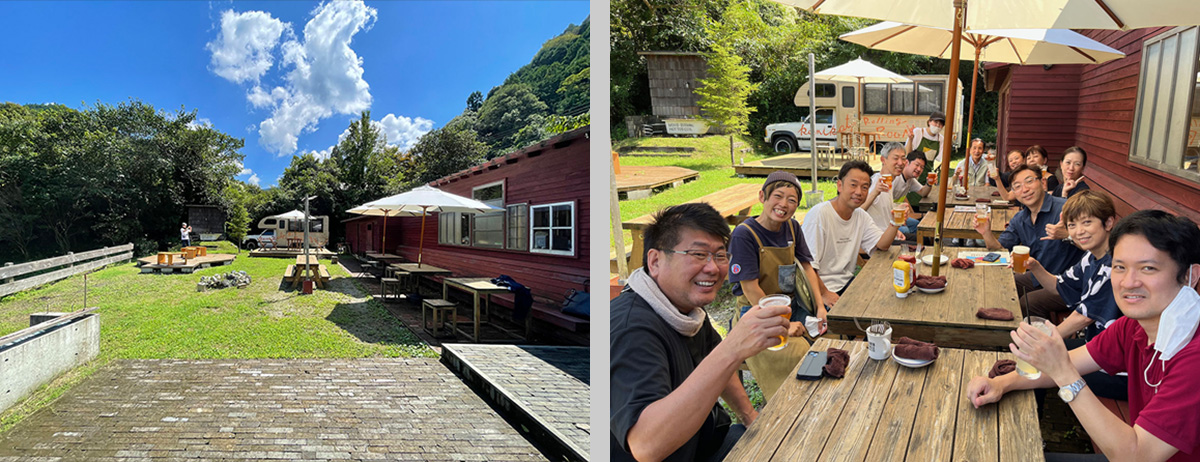 from left )Bright BBQ space, Members in a good mood at lunchtime!
from left )Bright BBQ space, Members in a good mood at lunchtime!
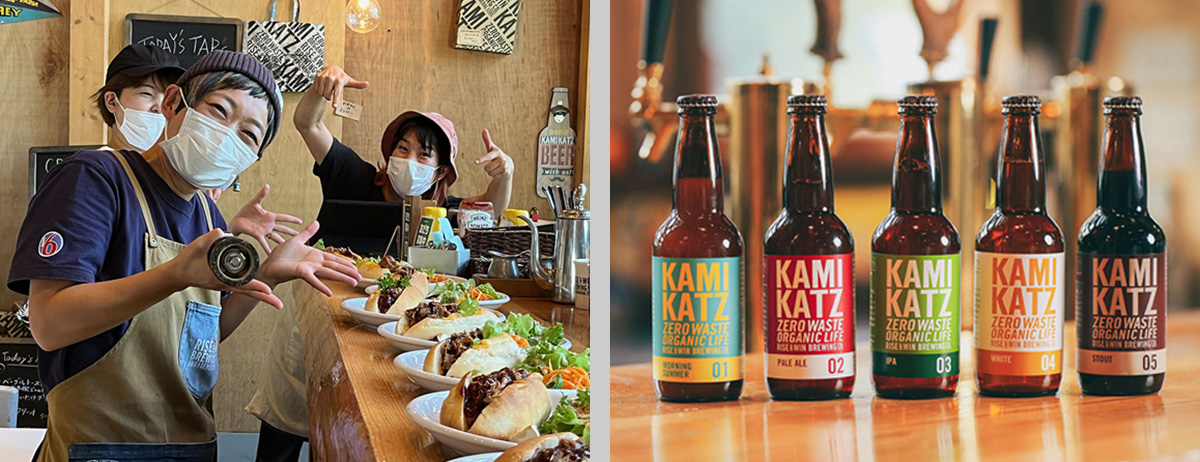 from left )The staff is too vibrant!, Craft beer following the concept
from left )The staff is too vibrant!, Craft beer following the concept
 from left )Members satisfied with lunch, Consistent concept for goods and POP
from left )Members satisfied with lunch, Consistent concept for goods and POP
「Kamikatsu Zero Waste Center」
After lunch, we finally arrived at our destination for the second day.
In May 2020, the Kamikatsu Zero-Waste Center, which was renovated from an old garbage station, opened. The KAMIKATSU ZERO WASTE CENTER is a new base for the town’s “zero-waste” initiative and aims to provide not only convenience for local residents, but also a facility where visitors from outside the town can learn about the zero-waste philosophy and spread it throughout the world. The recycling rate is over 80%.
We experienced how the design works as the only waste collection point in Kamikatsu Town with a recycling rate of over 80% and as a community where local people gather in an actual space.
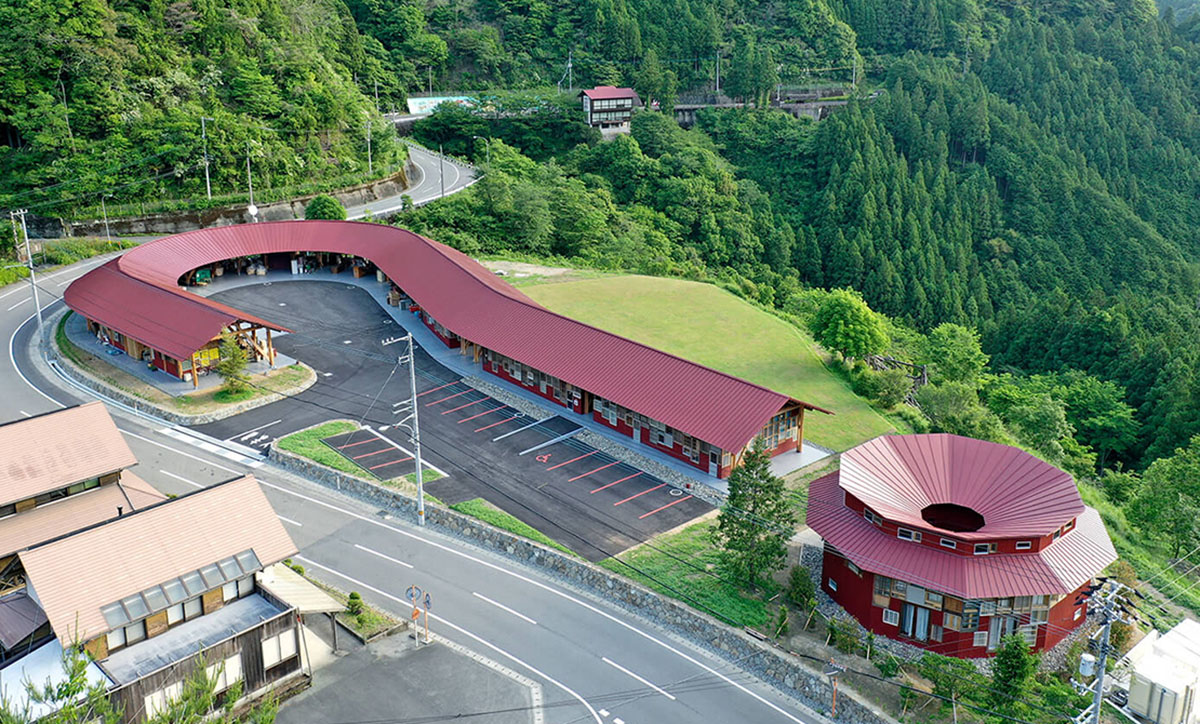 ©TRANSIT GENERAL OFFICE
©TRANSIT GENERAL OFFICE
When viewed from above, the architecture has a “?” layout.
 Nakamura’s design concept
Nakamura’s design concept
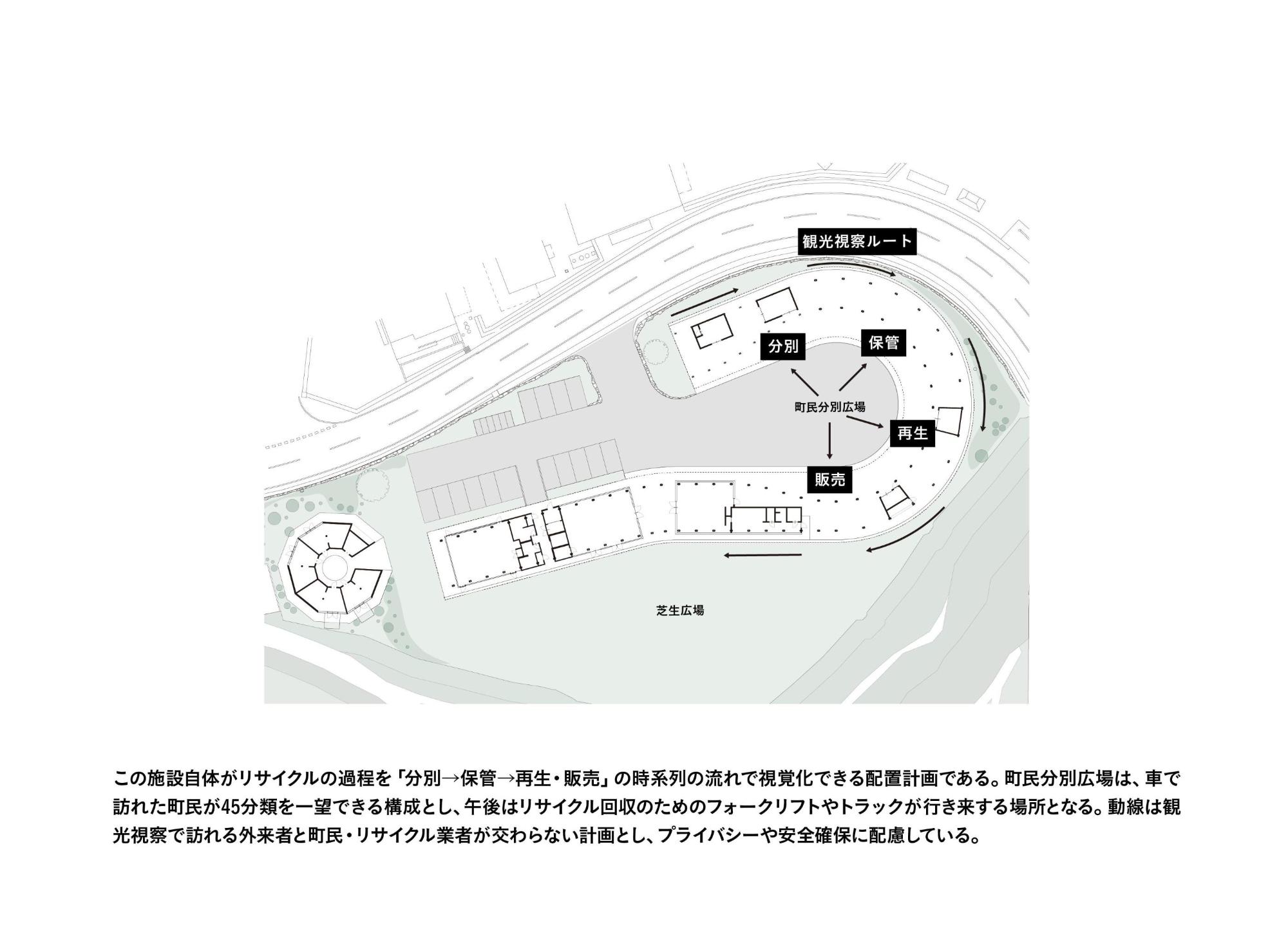 Looking at the layout, the “?” mark is more meaningful in terms of layout structure than in terms of advertising positioning.
Looking at the layout, the “?” mark is more meaningful in terms of layout structure than in terms of advertising positioning.
“The level of detail and perfection is breathtaking.”
Perhaps a bad word for it, but the “facility made of waste” was elevated to a design far beyond what was imagined. …
As a designer, you immediately notice the overwhelming amount of preparation (measuring 700 pieces of discarded fixtures and communicating with the government) and design work (making sense of using irregularly shaped scrap wood, sublimating irregular logs into a rational structural system, etc.), but the finished facility was not unreasonable. The resulting facility was comfortable, functional, and natural. The waste materials collected from all over the town are well rounded and give a gentle feeling to the space.
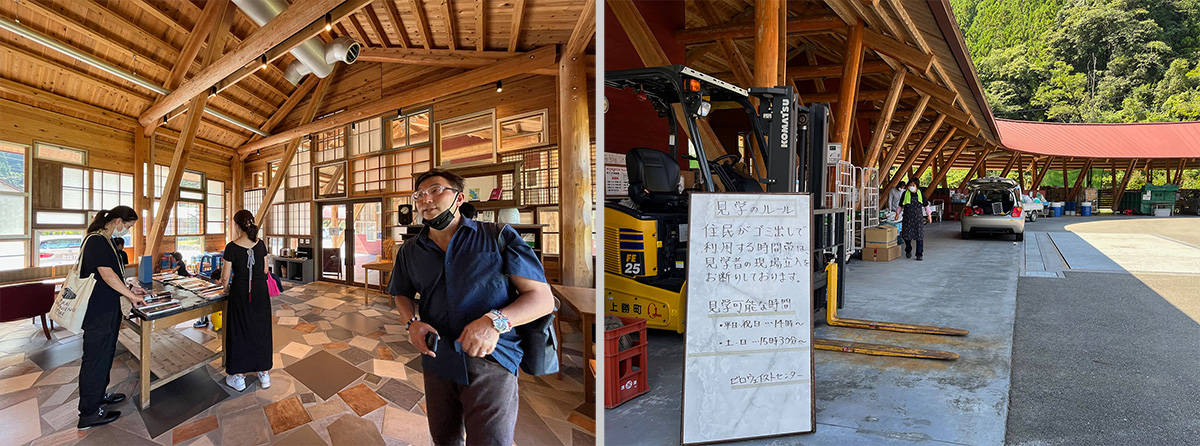 from left )Mosaic flooring using scrap wood, Continuous columns and beams
from left )Mosaic flooring using scrap wood, Continuous columns and beams
 Exterior walls and sash made of discarded fixtures
Exterior walls and sash made of discarded fixtures
“Borderless design that makes it difficult to see your borders as a designer.”
When you see the actual facility, it is very clear where the architecture is concerned, but to what extent is it the work of the designer and to what extent is it the ingenuity of the management? The ambiguity is exquisite, and if that was the designer’s intention, I have to admire him as a designer.
With a hotel and stores attached, this is a very well designed facility from an operational standpoint, and it is very clear that the software and hardware are integrated.
 “?” s dots are in the hotel for learning.
“?” s dots are in the hotel for learning.
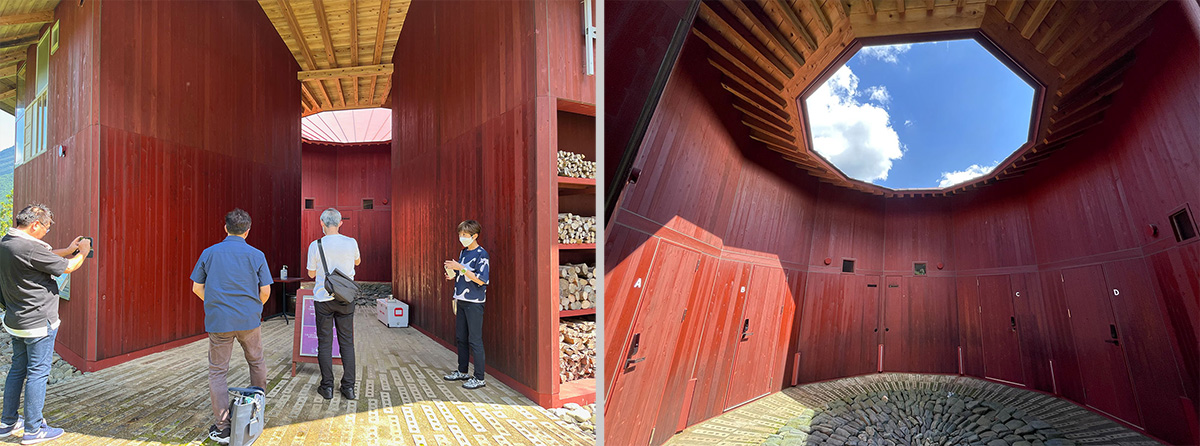 from left )Entrance Approach, Top light inside entrance
from left )Entrance Approach, Top light inside entrance
” Sustainability as Facility Lifespan.”
Although it has been more than two years since its opening, the facility has not faded away; in fact, I felt that it was so sustainable that it looked radiant. I think this is a good example of “improving with age” rather than deteriorating over time.
The value of the facility is further enhanced by the intervention of residents and visitors, and the activities of the facility are attracting worldwide attention. I felt that it is becoming increasingly important for designers to design not only things, but also things.
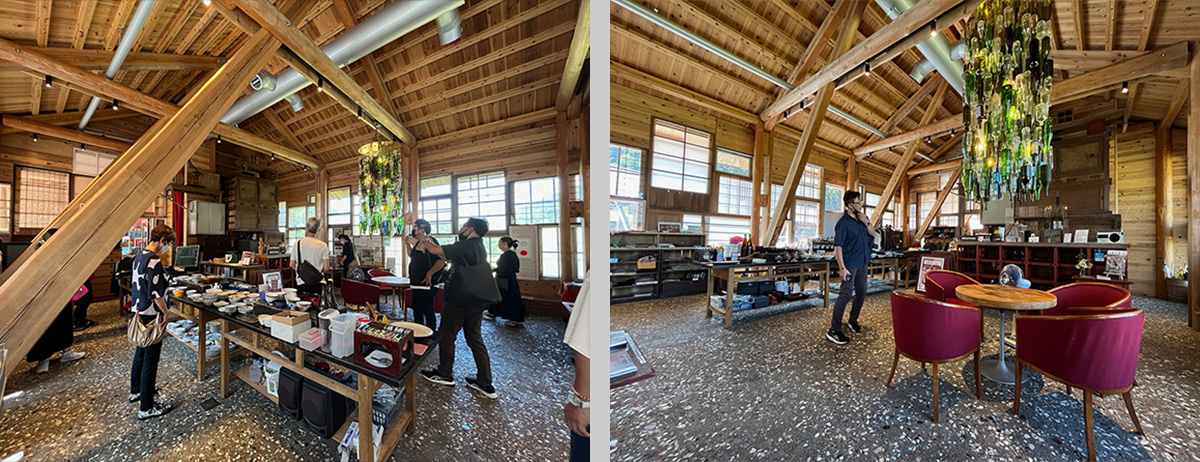 from left )Town residents can take home items they no longer need.
from left )Town residents can take home items they no longer need.
Kuru Kuru Shop, Lots of stuff still available!
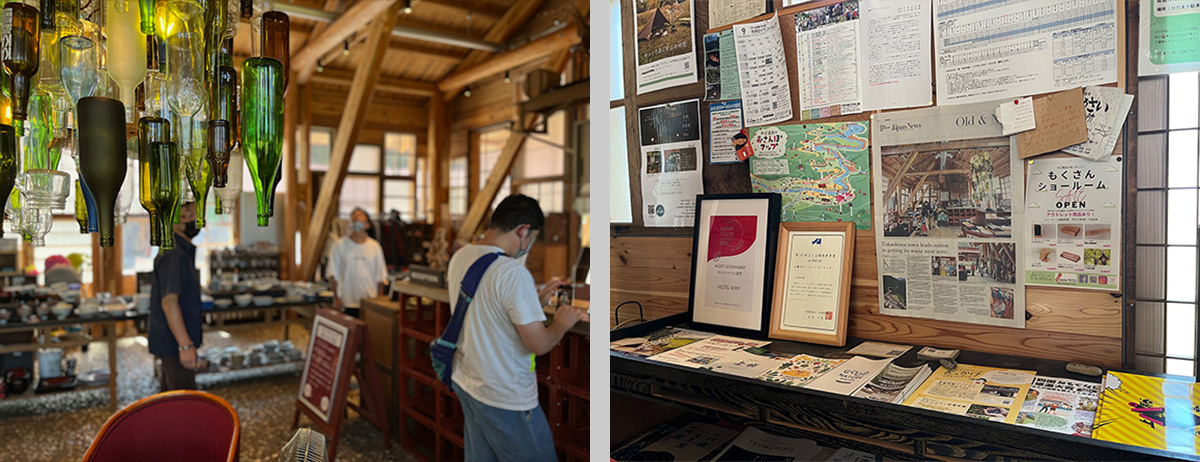 from left )Chandelier of waste bottles, Posting Space
from left )Chandelier of waste bottles, Posting Space
 from left )Nostalgic production, Tasteful ceramics
from left )Nostalgic production, Tasteful ceramics
Chapter_03: After the Design Tourism Inspection Tour in Tokushima
KAMIKATSU ZERO WASTE CENTER” was a Gold Award winner of the KUKAN DESIGN AWARD 2022 when we visited the site, but as a result of the final screening, it also won the highest award, “KUKAN OF THE YEAR 2022”! Congratulations!
I can see why this work had the impact and persuasive power to win the highest award. I was reminded once again that the power of design in space is truly inspiring to the community and the world.
All tour participants
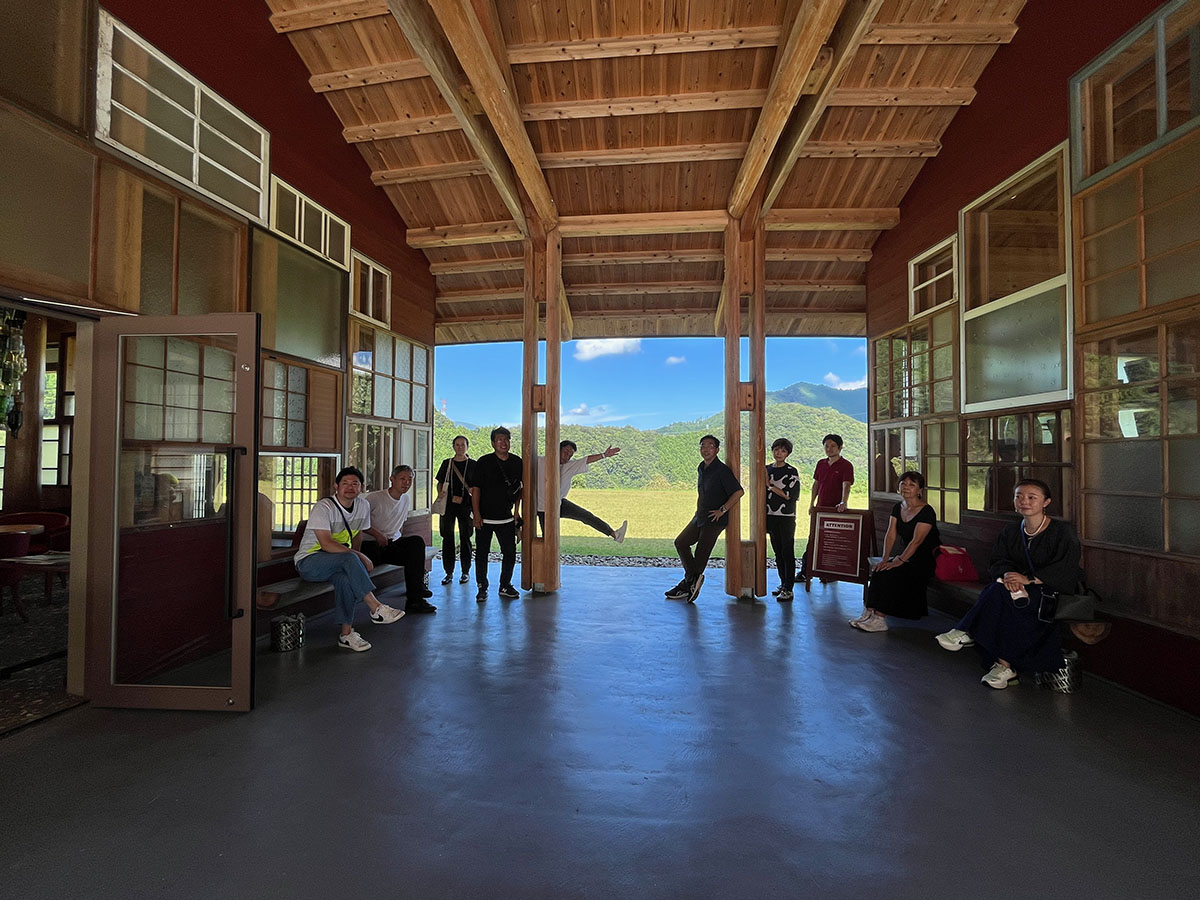 Members full of design
Members full of design
The possibilities of spatial design are endless.
KUKAN DESIGN AWARD will continue its activities to spread designs that inspire people in society. We look forward to the next and subsequent design tourism tours, which will be even more powerful than before.
You can watch the third and final round of judging, in which KAMIKATSU ZERO WASTE CENTER was selected, below. The jury members had a very heated discussion, so please take a look at the video below.
KUKAN DESIGN AWARD 2022 Digest of the third and final round of judging
KUKAN DESIGN AWARD Executive Committee

